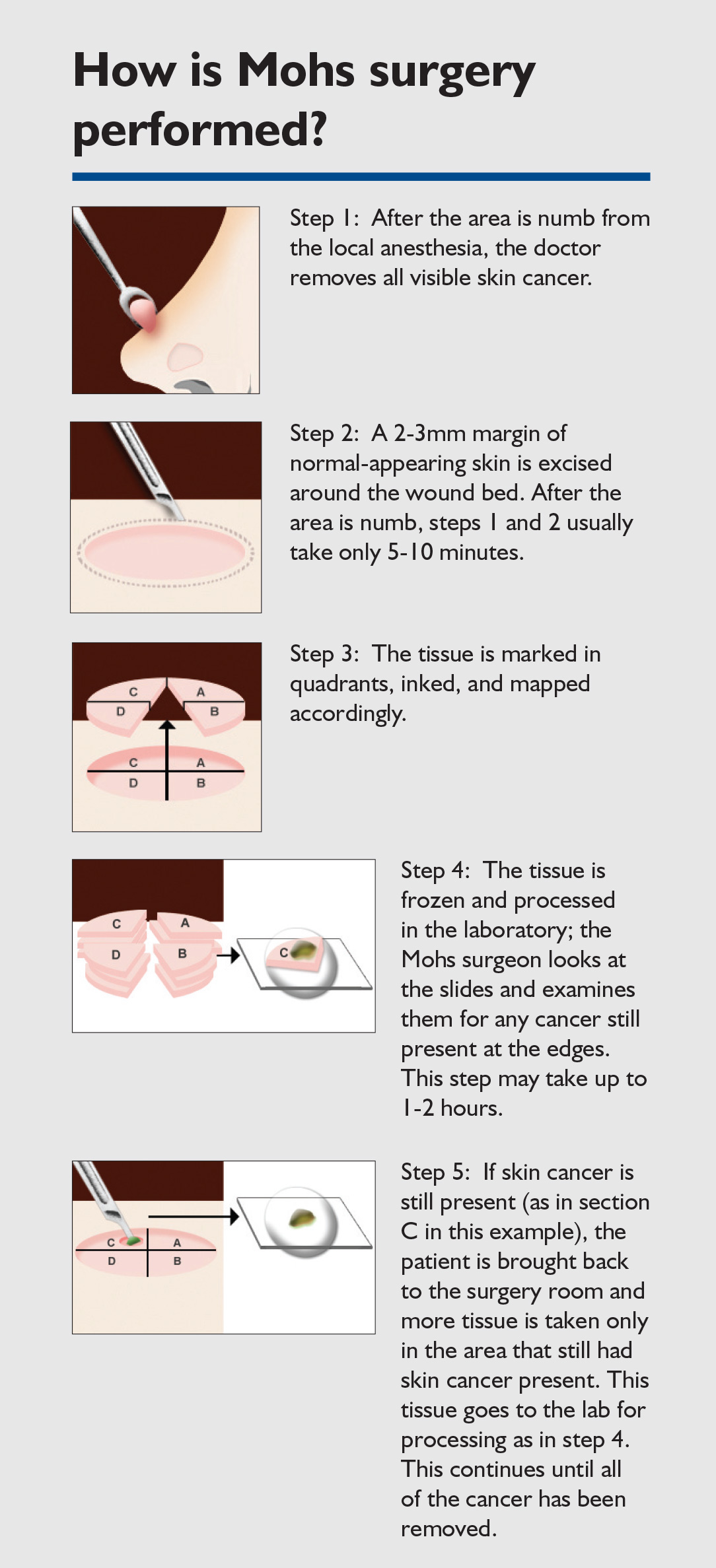12200 Park Central Drive, Suite 215
Dallas, Texas 75251
Fax 972-239-1333
Mohs surgery is a specific type of skin cancer removal procedure named after Dr. Frederick Mohs who developed the technique in the 1930s. With this technique, specially-trained dermatologists remove skin cancers one layer at a time, ensuring all the cancer has been completely removed prior to reconstruction while also removing the least amount of non-cancerous tissue possible.
Mohs surgery offers the highest cure rates for skin cancer, which are usually 95-99%. In contrast, other methods available to treat high-risk skin cancers have cure rates of 50-90%.
The reason that Mohs surgery is so effective is because it allows for evaluation of 100% of the surgical margin and allows the surgeon to detect any “roots” of cancer that were left behind. In addition, it is very safe since it is performed using only local anesthesia.
Mohs surgery is used for skin cancers which are at higher risk for forming subclinical extensions or “roots” which are invisible to the eye. These cancers can be much bigger than they look on the surface, much like the tip of an iceberg. Mohs surgery is indicated in the treatment of skin cancers:
Once you have been referred by your provider to our office, please call us to schedule a consultation with the doctor. This appointment is important to evaluate your skin cancer, explain the procedure in detail, and make sure the doctor does not need to do any further testing or referrals prior to your Mohs surgery.
It is impossible to predict how many stages of Mohs surgery a patient will need. Each stage can take 1-2 hours to process, and reconstruction can take an hour or more. Therefore, you should plan on being in our office for the entire day.
Your doctor will evaluate the wound after all of the cancer has been removed and will discuss her recommendations with you on the best way to proceed so that healing is optimal. Options include:
You will return in one to two weeks to have the stitches removed and to ensure that your wound is healing well. Thereafter, it is important for you to return to the office of your referring doctor for regular skin checks to look for any new cancers.
Approximately 1-3% of skin cancers may grow back after Mohs surgery. This can be higher for certain high risk cancers. We recommend that you closely monitor your surgical site for recurrence of the skin cancer, and follow closely with your referring physician.









SURGICAL DERMATOLOGY ASSOCIATES DALLAS, PA
One Forest Medical Plaza
12200 Park Central Drive, Suite 215
Dallas, Texas 75251
Office 972-239-6999
Fax 972-239-1333
